Having bony shoulders is frustrating. I know, because I’ve been there before!
It makes you look weak, feel weak, and just too skinny. The good news is, it’s actually not that hard to build bigger shoulders, and it can be done relatively quickly with the right type of exercises in your workouts.
I personally was able to build much bigger shoulders in less than 12 weeks, and I had some pretty bony shoulders to begin with! I’ll show you how I did it all in this article.
But why would you want bigger shoulders?
Having bigger shoulders comes with a whole bunch of really great advantages, including:
A more buff and appealing body shape
Stronger looking physique
Better strength abilities in sports
Makes your arms look bigger
Shirts just fit and feel nicer!
I’ve compiled the ultimate guide to morph your slim clavicles into wide, strong shoulders that will not only turn heads, but also elevate your self-esteem.
Let’s get to it.
Key Takeaways
Transform your bony shoulders with compound exercises, isolation exercises and progressive overload.
Enhance shoulder mobility & posture through exercise, stretching and proper form.
Stay consistent & persistent by setting realistic goals, tracking progress & avoiding common mistakes.
How I Went from Bony Shoulders to Buff Shoulders in 12 Weeks
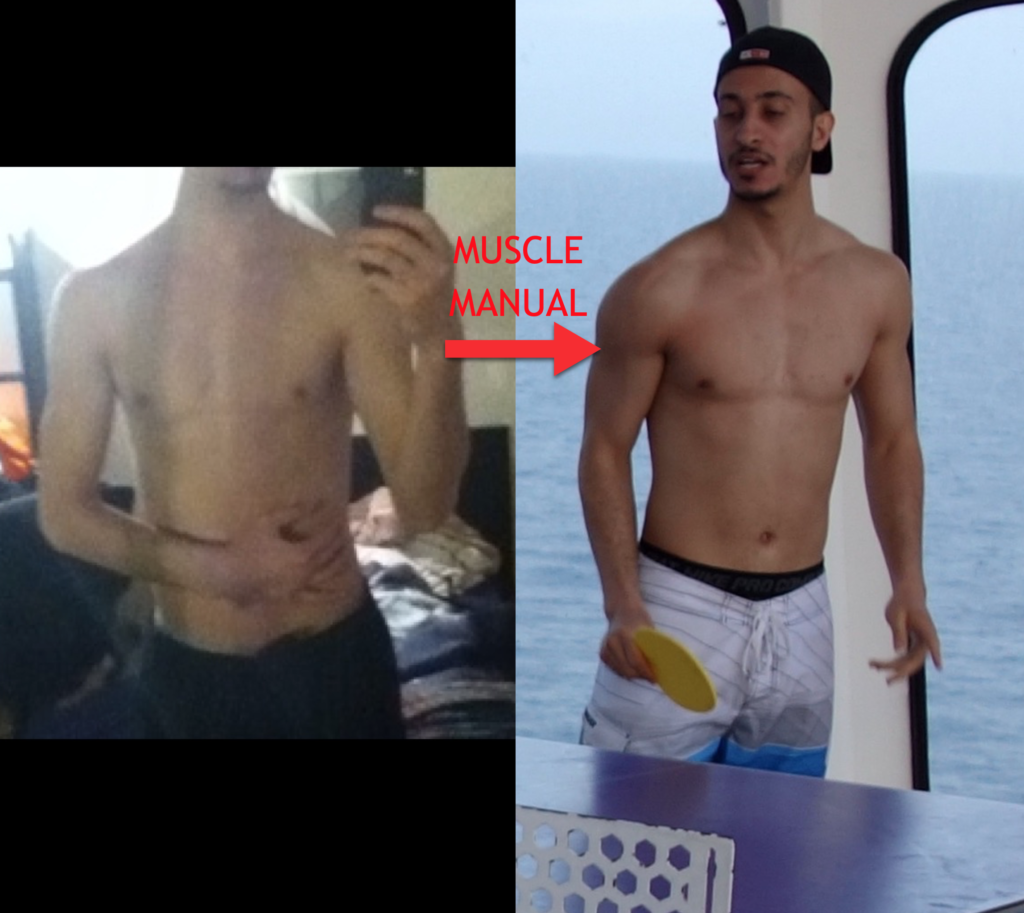
As you can see in the before-after photos above, building bigger shoulders for me had a tremendous effect on my upper body physique.
My strength levels were very apparent when I played basketball, and tank top shirts just looked way nicer when I wore them!
I hope that my results are a motivation for you as well, because building bigger shoulders is simple and doable, even for us super skinny guys!
Understanding Bony Shoulders

Narrow shoulders are often the result of a naturally thin frame, genetics, and narrow clavicles, which affect your overall body shape.
Despite this, it’s possible to enhance your existing shoulder structure by building muscle around the bones to create a more muscular and attractive look. This transformation is not about altering your natural shape but rather optimizing it for a stronger and more appealing appearance.
Remember, having broader shoulders is not only a confidence booster but also contributes to a more attractive physique. Research suggests that women rate stronger-looking men as more attractive. So, start your journey towards broader shoulders by:
Understanding the muscle anatomy
Implementing the right exercise strategies
Focusing on nutrition
Considering lifestyle factors
Shoulder Muscle Anatomy: The Key to Broadening Your Frame

The secret to achieving broader shoulders lies in developing your deltoid muscles, which consist of three main groups: anterior (front), medial (side), and posterior (rear) deltoids. Each of these muscle groups is integral to broadening your frame and creating a more appealing physique.
Let’s examine the functions and exercises for each deltoid muscle group.
Anterior Deltoid
The anterior deltoid muscle, located in the upper arms, is responsible for shoulder abduction and lifting your arms in front of your body. Some exercises that target the anterior deltoid include:
Overhead presses
Front raises
Arnold presses
Upright rows
Incorporating shoulder exercise into your shoulder workout routine can help promote balanced and well-developed shoulders.
Engaging all three shoulder muscles in your workouts, including the anterior deltoid, promotes broader and more muscular shoulders.
Medial Deltoid
The medial deltoid muscle plays a significant role in shoulder abduction, giving your shoulders a wider appearance. Exercises like lateral raises and incline lateral raises specifically target the medial deltoid, contributing to a broader shoulder look.
Incorporating these exercises into your routine will help enhance your shoulder circumference and overall upper body shape, including your shoulder to waist ratio, while also improving your body weight management.
Posterior Deltoid
The posterior deltoid muscle contributes to shoulder extension and external rotation, ensuring balanced and strong shoulders. Exercises like deadlifts, chin-ups, and rows are excellent for developing the posterior deltoid, while face-pulls, rear-delt flyes, and TYIs can speed up the growth of this muscle group. Including rear delt exercises in your routine will help you achieve well-rounded shoulder development.
Exercise Strategies for Transforming Bony Shoulders
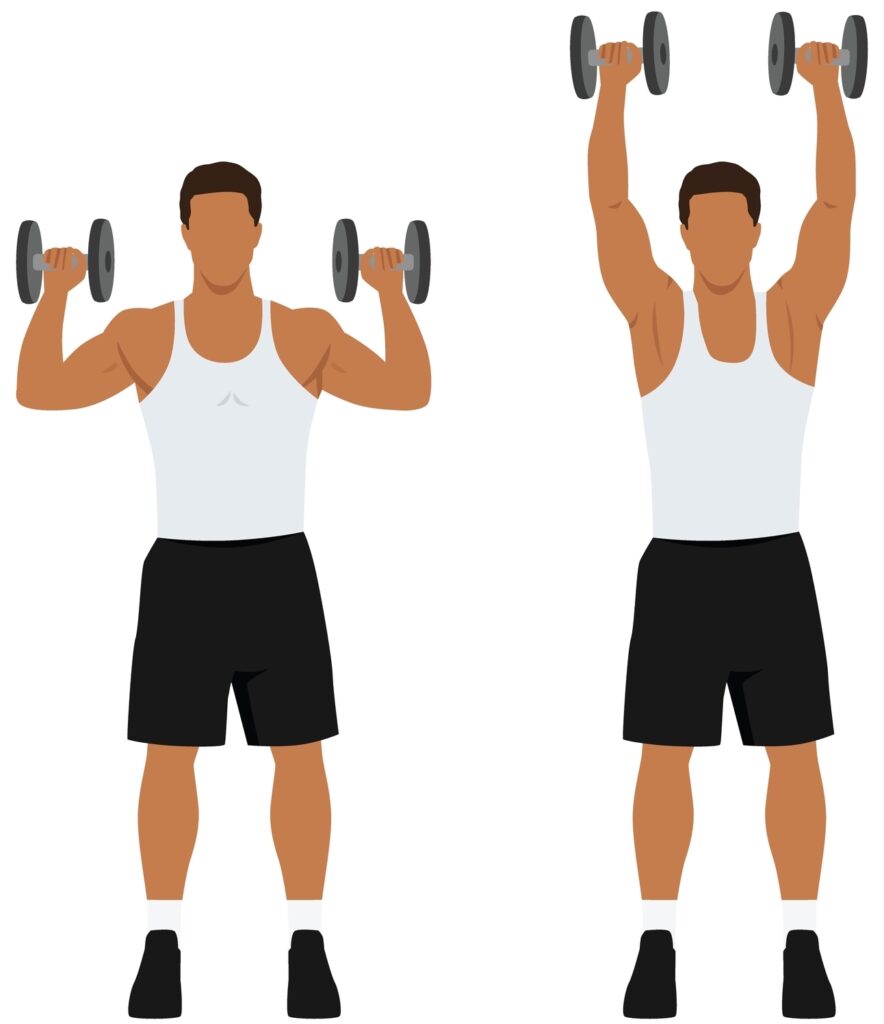
With the muscle anatomy in mind, it’s time to apply this knowledge to build muscle.
To transform those bony shoulders, you’ll need to apply effective exercise strategies, including compound exercises, isolation exercises, and progressive overload.
Let’s detail each of these strategies.
Compound Exercises
Compound exercises like overhead presses and push-ups, work on multiple muscle groups and are important for overall shoulder development.
By engaging various muscles, compound exercises promote balanced growth and prevent muscle imbalances, leading to a more attractive and functional upper body.
For optimal shoulder growth, incorporate compound exercises into your routine 2-3 times a week. Remember to use proper form when executing these exercises to maximize muscle activation and prevent injury.
For example, when performing overhead presses, keep your core tight, chest up, lower back in neutral position, and knees locked.
Isolation Exercises
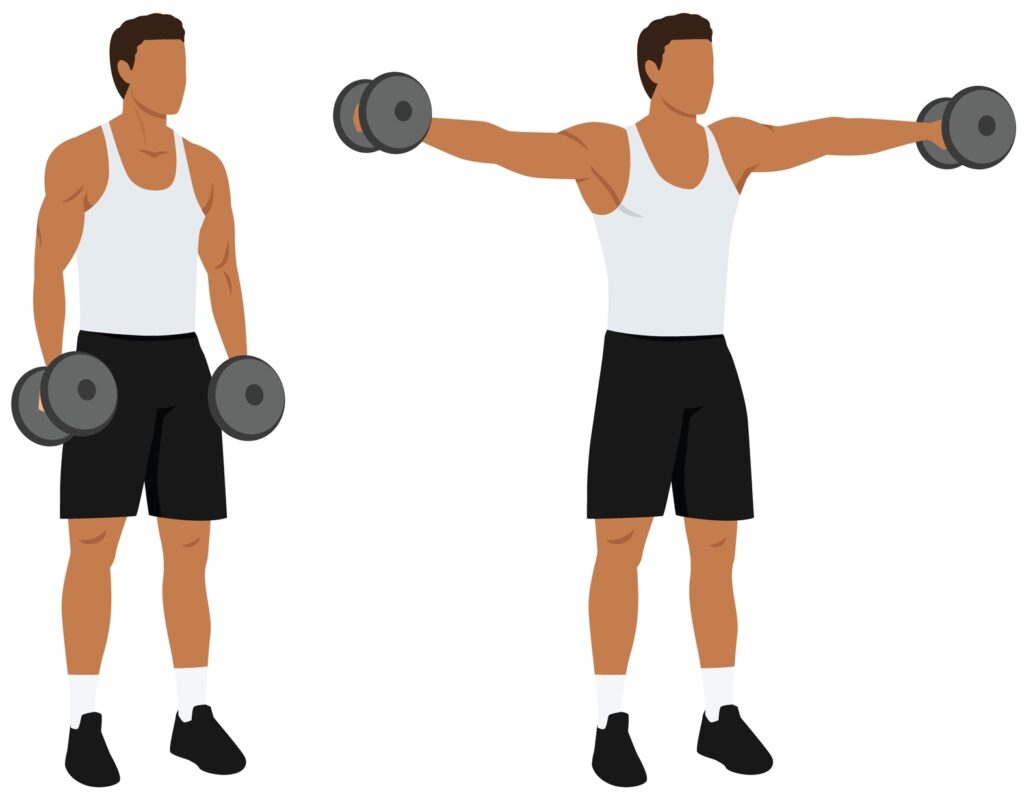
Isolation exercises such as lateral raises and rear delt flyes, target specific shoulder muscles for concentrated growth. These exercises allow you to hone in on a particular muscle group, optimizing development and addressing any weaknesses in your shoulder structure.
Incorporating isolation exercises 2-3 times a week will help you achieve broader shoulders more effectively. As you perform these exercises, maintain a strong mind-muscle connection to ensure you’re targeting the desired muscle group and maximizing growth.
Mind-muscle connection just means that you’re actively trying to focus on the muscle that you’re working out.
Progressive Overload
Progressive overload is very important for continuous muscle growth and development.
By gradually increasing the weight or resistance in your exercises from workout to workout, you’ll challenge your muscles to adapt and grow stronger. This extra stimulus encourages muscle growth, leading to bigger and more developed shoulders over time.
There are various ways to implement progressive overload in your shoulder workouts: you can increase resistance, add more reps, or adjust the tempo of your exercises.
Keep experimenting and challenging yourself to achieve the best results and transform those bony shoulders into powerful, broad ones.
Nutrition and Lifestyle Factors for Shoulder Growth
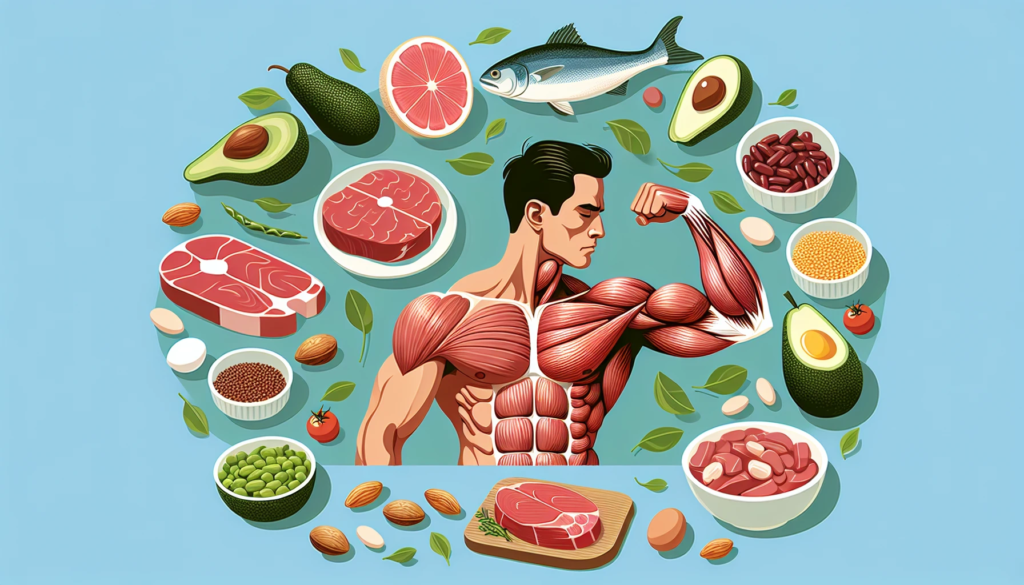
While exercising is a fundamental aspect of shoulder growth, nutrition and lifestyle factors have a significant impact on building broader shoulders.
Consuming adequate protein and maintaining a balanced diet rich in lean proteins, complex carbohydrates, and healthy fats will provide your body with the necessary nutrients to support muscle growth.
Alongside nutrition, sufficient rest, hydration, and stress management are important as they contribute to overall health and muscle development. By prioritizing a healthy lifestyle, you’ll create an optimal environment for your shoulders to grow and transform.
Enhancing Shoulder Mobility and Posture
Enhancing shoulder mobility and posture is not only important for building broader shoulders but also for injury prevention.
Exercises like deadlifts, rows, and chin-ups can help enhance shoulder mobility while simultaneously contributing to muscle growth. By focusing on proper form and technique, you’ll ensure your shoulders are properly aligned and functioning optimally.
Maintaining good posture and shoulder mobility also reduces the risk of chronic shoulder pain and injuries, especially in athletes who engage in a lot of overhead activities like basketball, volleyball, etc.
Strengthening, stretching, and gradually increasing overhead exercises are vital in preventing shoulder injuries and promoting shoulder health, as well as healthy, broad shoulders. Proper care of the shoulder joint is essential for overall shoulder health.
Tips for Consistency and Persistence in Your Shoulder Transformation Journey

Turning your bony shoulders into broader ones is a process that necessitates consistency and persistence. To stay on track, follow these steps:
Set realistic goals.
Track your progress.
Stay motivated.
Break your big goal into smaller, achievable steps.
Give yourself a timeline to reach them.
Monitor your progress through measurements, progress pics, or fitness diaries.
By following these steps, you’ll stay focused and motivated throughout your transformation.
Celebrate small wins and learn from setbacks, as they are both part of the process. Surround yourself with inspiring content, resources, and a supportive community to keep your motivation high.
Remember, transforming your shoulders takes time, effort, and dedication, so stay persistent and trust the process.
Common Shoulder Training Mistakes to Avoid
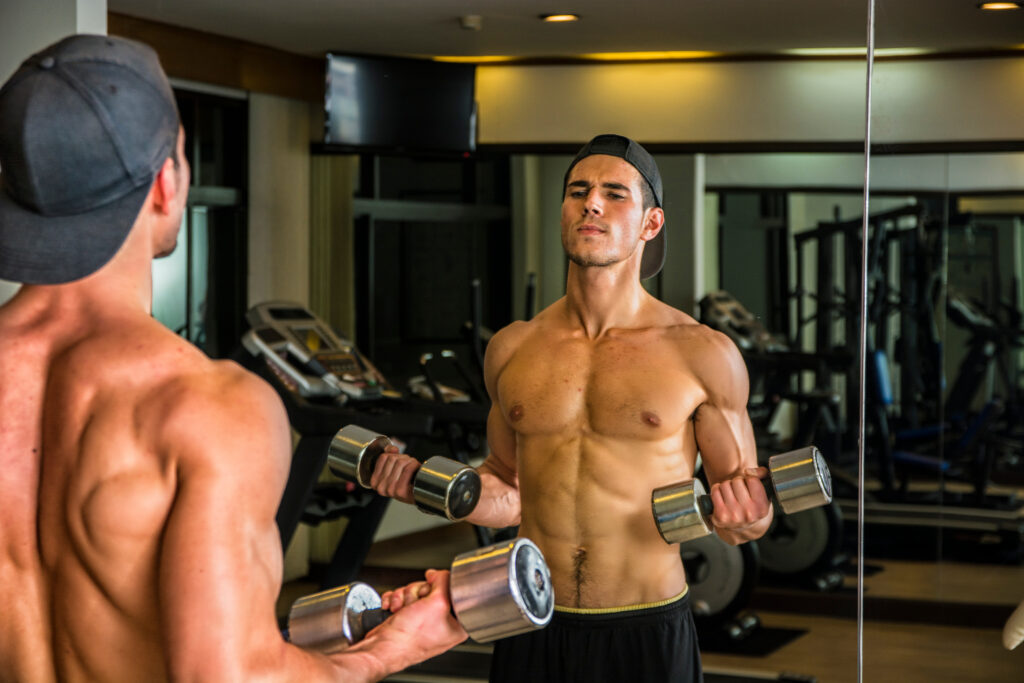
To optimize shoulder growth and prevent injury, it’s important to prevent common shoulder training mistakes.
Neglecting certain muscle groups, using improper form, and overtraining can hinder your progress and even lead to injury.
Focus on a balanced training approach that targets all shoulder muscles, so you’ll promote proper alignment and functionality.
Use correct form and technique during shoulder exercises to prevent injury.
Strengthening your rotator cuff, maintaining proper scapular positioning, and working on shoulder flexibility can help ensure your form is on point during your workouts.
Summary
Transforming your bony shoulders into broad, muscular ones is a rewarding journey that requires a combination of exercise strategies, proper nutrition, and a healthy lifestyle.
Not only was I able to do it in less than 12 weeks, but many of my clients that I coach are building impressive shoulders by following the steps mentioned in this article. Check out this post on my 6-month transformation from skinny to muscular.
By developing your deltoid muscles, implementing compound and isolation exercises, and focusing on progressive overload, you’ll create a strong foundation for shoulder growth. Enhancing shoulder mobility and posture while avoiding common training mistakes will further support your transformation. Stay consistent, persistent, and motivated, and you’ll soon see impressive results in your shoulder development.
If you’re skinny and trying to bulk up, then be sure to also read this article on the ultimate guide on how to bulk up for skinny guys.
Frequently Asked Questions
How can I make my shoulders less bony?
To make your shoulders less bony, you can do full body exercises and upper body workouts such as push-ups, overhead/military press, and lateral raises. This will help build muscle mass throughout the body and specifically target the shoulders.
Are bony shoulders genetic?
Yes, shoulder width is largely determined by genetics. However, you can build and develop muscular shoulders.
What are the main muscle groups in the shoulder?
The shoulder consists of three main muscle groups – the anterior, medial and posterior deltoids – working together to move the arm.
How often should I engage in shoulder exercises to see progress?
For optimal progress, aim to complete a shoulder workout twice a week.


Recent Comments